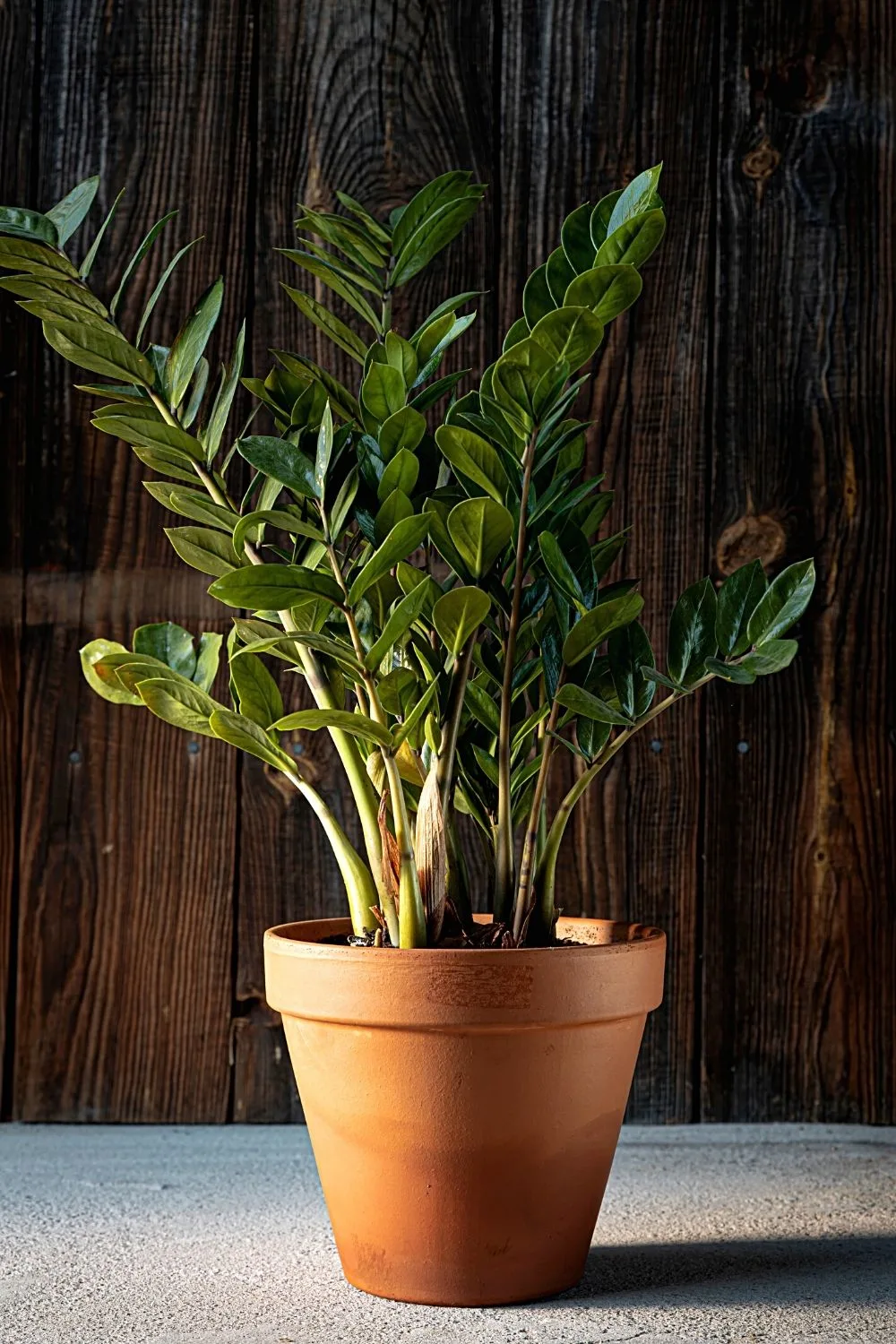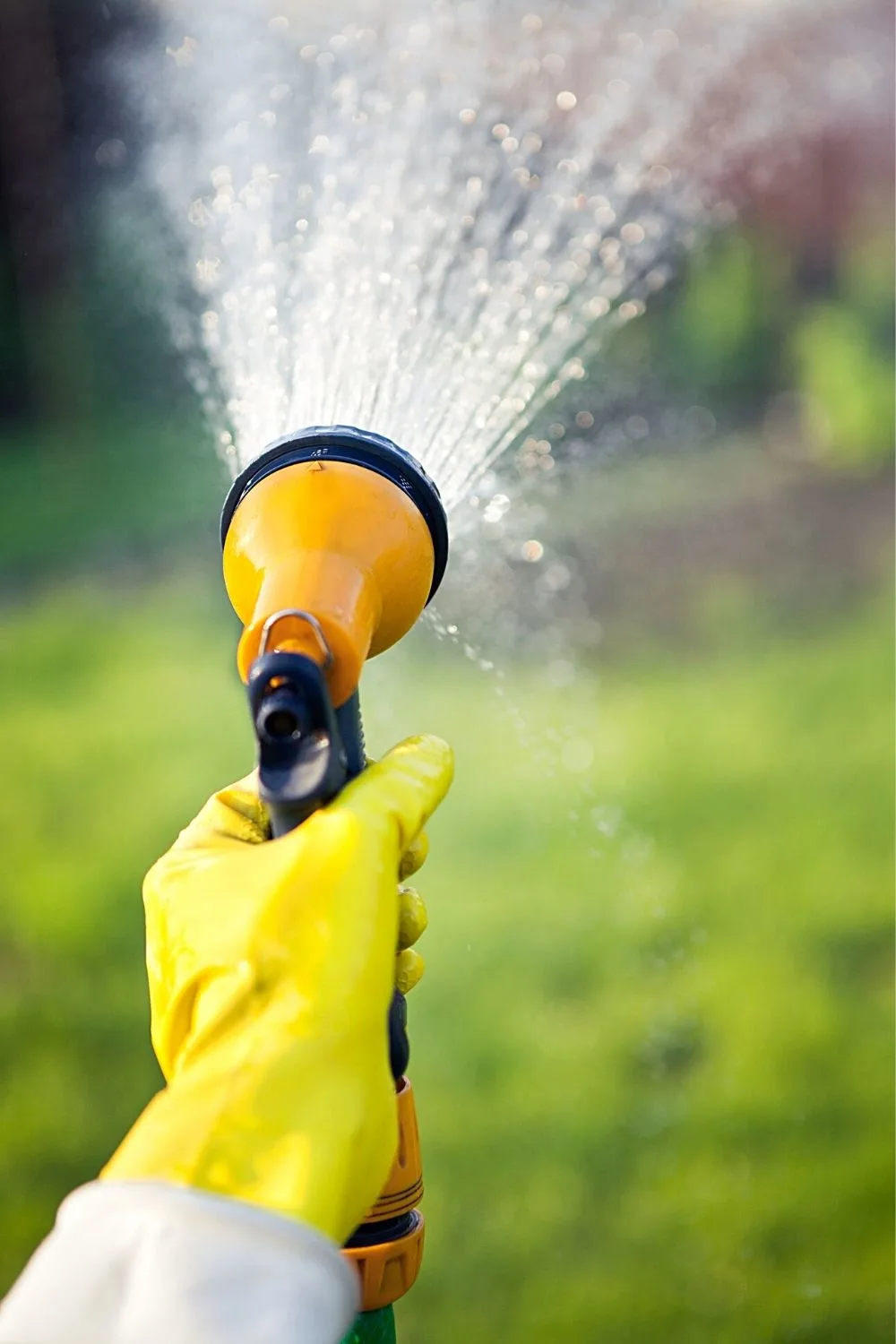How to Clean a ZZ Plant’s Leaves?
ZZ plants are renowned for their glossy green leaves along upright stems according to the University of Florida. As with all houseplants, they’ll need to be cleaned every now and then.
But what’s the most effective way of cleaning your ZZ plant’s leaves?
There are various benefits to a plant having clean leaves. Not only does it help them create the food they need but they also look healthier with dust-free foliage.
When handling a ZZ plant, it’s important to be careful as this plant is toxic and can irritate the skin. However, I’ll talk you through the various ways to clean this plant while being safe.
Your plant will be shiny again in no time.
How to Clean a ZZ Plant’s Leaves
There are three ways to clean a ZZ plant’s leaves. Wipe each individual leaf with a damp, microfiber cloth, swish the whole plant around in a bucket of water or spray the whole plant with a shower or hose. The cleaning method you select depends on the weight and size of the plant you have.

How to Clean a ZZ Plant’s Leaves
Different Methods to Clean the Leaves of your ZZ Plant
All houseplants need to be cleaned and dusted. It’s not something we consider when buying a houseplant but making sure the leaves are dust-free has huge benefits to the plant.
Thanks to the shiny leaves on a ZZ plant, it’s easy to see when they need a clean.
There are three ways to clean a plant and I’ll be explaining all of them in this article.
Choosing a method is personal because it largely depends on the size of the plant you’re working with and the one that you prefer.
Wiping Individual Leaves
My ZZ plant is relatively small so this is the method I prefer at the moment. Taking a microfiber cloth, dunk it in lukewarm water.

If your ZZ Plant is still small, you can wipe each of its leaves with microfiber cloth dunked in lukewarm water
Make sure you ring it out so you’re left with a damp cloth and not one that’s dripping all over the floor.
Carefully slide your palm under the leaf you want to clean. Gently wipe the surface of the leaf, going over it a couple of times to get rid of stubborn dust and dirt.
Once you can see that the leaf is shiny again, you’ve done a good job.
This method is good for smaller plants because close attention can be paid to ensure that all the dust has been removed.
I’m not saying that it wouldn’t work for larger plants but it would take a long time, especially if you have several plants that need dusting.
Swish the Whole Plant in a Bucket of Water
This method is ideal for plants that are too large to use the microfiber method but are light enough to pick up.
Take a bucket that’s large enough to comfortably fit the leaves of the ZZ plant inside without bending or damaging any of them and fill it with lukewarm water.
Remove your plant carefully from its decorative pot or saucer but keep it within the plastic nursery pot.
With one hand, palm down, on top of the soil, holding it in place, turn the plant upside down and dunk it into the bucket of water.
Swirl the plant around several times until you think the majority of the dust has been removed.
It’s important that the plant is left to dry out after this method as ZZ plants hate being soggy. If the sun is out, put it in the garden but in a shady place if possible.

If you’re cleaning your ZZ plant’s leaves with the swish bucket method, make sure to dry it in a shady area
Don’t leave it outside for too long otherwise, you risk sun damage to the leaves.
Spraying the Plant with a Shower or Hose
With this method, you have to be careful that you don’t end up soaking the soil and causing root damage.
However, it does work well with larger plants that are too big or heavy to use the swishing method.

If your ZZ plant’s too large for the swish bucket method, bring it out of the garden and shower or hose it down
Remove the plant from its decorative pot or saucer and place it in your bathtub or in the garden. Use a shower or hose to rinse the leaves of any built-up dust and grime.
You’ll probably have to angle the stream of water away from the soil but once you figure it out, it’s pretty easy to do.
Just like the swishing method, the plant will need to be left to dry out after it’s been cleaned, especially if the soil has been soaked.
Frequently Asked Questions about How to Clean a ZZ Plant’s Leaves
Does the temperature of the water matter?
Lukewarm water is ideal when cleaning a plant. If the water is too cold, it’ll cause the plant’s leaves to curl up due to shock. You’ll also be left with water spots on the leaves’ surface. Yet if the water’s too warm, the leaves can scald and go crispy.
Is it dangerous to handle a ZZ plant?
It’s crucial to take note that a ZZ plant is toxic when ingested. This doesn’t mean that you shouldn’t touch them but people have reported mild irritation when they’ve been in contact with the plant. If you have sensitive skin, it might be worth wearing gardening gloves when washing this plant.
Should I add anything to the water?
Plain water is absolutely fine to clean the leaves of your plants. However, a drop or two of dish soap can be added as this is a known method to get rid of pests on houseplants. Just make sure that you rinse any bubbles away once the leaves are clean as they can leave marks once dry.
How often should I clean the leaves?
There’s no schedule that you should be following when it comes to cleaning a plant. I would recommend checking your leaves every 14 days or so and see what the dust build up is like. When the ZZ plant has lost its shine, clean it.
Conclusion
Plants use their leaves to turn sunlight into food so it’s vital that you keep them free from dust and dirt.
Cleaning them every month or so is enough to keep your plant in good shape and help it thrive, which is what you want from all houseplants.
A ZZ plant with shiny leaves is a good indicator that it’s in a good condition and is happy with the care it’s receiving.

Daniel has been a plant enthusiast for over 20 years. He owns hundreds of houseplants and prepares for the chili growing seasons yearly with great anticipation. His favorite plants are plant species in the Araceae family, such as Monstera, Philodendron, and Anthurium. He also loves gardening and is growing hot peppers, tomatoes, and many more vegetables.


